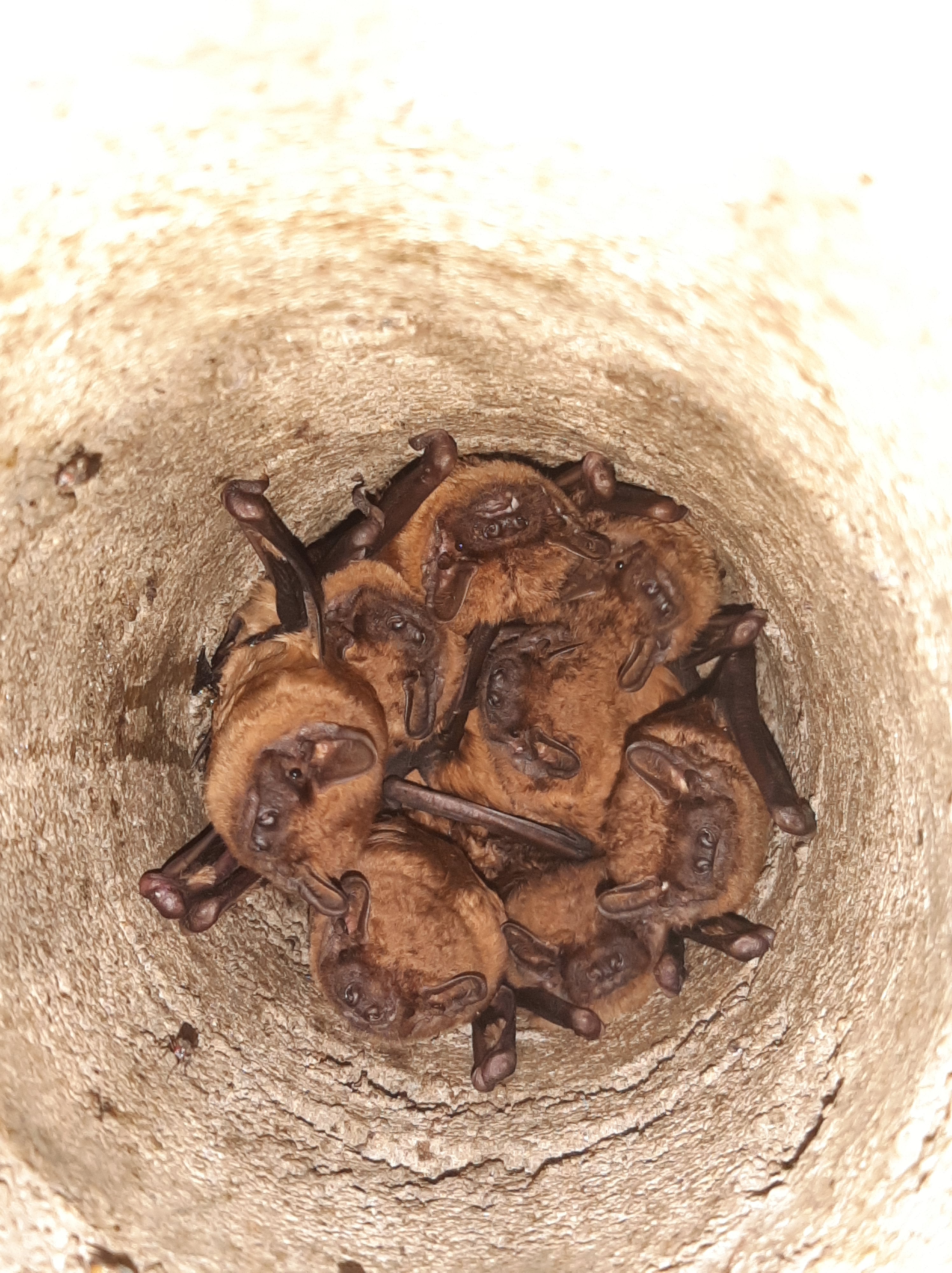In their new study, Czenze and colleagues demonstrate the importance of placing bat boxes in diverse locations to provide varied roost microclimates.
There are over 1400 species of bats on the planet that live in a wide variety of roosts, including caves, buildings, and trees. Many bat species are threatened by climate change and habitat destruction, and this is particularly true for forest bats. Due to intensive forestry and other land-use changes, many bat populations across the world have lost their natural roosts and rely on artificial roosts, known as bat boxes.

Bat boxes come in all shapes and sizes and are a common conservation solution for the loss of natural roost sites (to find out more, visit Bat Conservation International’s guide to bat-boxes). Choosing the right design, colour, and placement of bat boxes is critical as these factors all affect the roost microclimate.
During the summer reproductive season, females of many bat species roost in large groups called maternity colonies, while males often roost in smaller groups or solitarily. Warm roosts are beneficial for mothers during gestation and lactation, as well as for pups during their critical early growth stages. However, if roosts get too hot, bats and their pups are at risk of dehydration and lethal heat stress.
Evidence suggests that if placed improperly, bat boxes become much hotter than natural roosts and may become death traps for their inhabitants during heat waves. Understanding how the positioning of bat boxes in natural habitats can influence roost microclimate is critical information for developing bat conservation strategies. However, this is challenging as there is currently little information linking bat box microclimates to their occupants’ ability to tolerate heat and cool themselves evaporatively.
To help overcome this challenge, we wanted to understand the cooling costs bats face when occupying bat boxes during hot summer days. We examined whether thermoregulation at high air temperatures differs between sexes in four species of European bat that use bat boxes, and how this variation may affect their cooling costs during heatwaves. To answer this question, we focused on bats captured from woodcrete bat boxes in a Scot’s pine plantation forest in Poland during summer.

We used data-loggers to measure the temperature of bat boxes in the forest that varied in sun exposure and direction, and recorded a maximum roost temperature in a sun-exposed box of 44°C when outside temperature was only 31°C. In the lab, we measured bats’ body temperature and used respirometry to measure their evaporative water loss, and resting metabolic rate at increasing air temperatures from 28°C to 48°C. Using these physiological data and the bat box temperatures, we created predictive models of the water requirements for evaporative cooling in real-life scenarios during hot summer days.
Our results suggest that females of all four species have a greater cooling capacity than males, but both sexes of all four species are at risk of lethal dehydration during heatwaves. In fact, our estimates suggest that the daytime water costs for evaporative cooling of small bats inhabiting sun-exposed roosts can be equivalent to ~ 30% of their body mass during present-day heatwaves. This indicates that they will be at significant risk of heat stress/dehydration mortality with predicted increases in the intensity and frequency of heatwaves due to climate change. However, our models also suggest that these cooling costs can be cut in half if individuals occupy bat boxes in shaded positions.
Scot’s pine plantation forests and woodcrete bat boxes are common in Europe, and thus our data has important implications for conservation managers about the placement of bat boxes for common European bat species inhabiting managed forests. We recommend that bat boxes be placed in positions varying in cardinal direction and sun exposure to provide a range of roost microclimates that mimic the natural roost sites in forests. This will allow bats to choose roost microclimates and switch roosts when necessary, and will help avoid conservation pitfalls.
Although there is no “one-size-fits-all” solution for bat-box design, by understanding the thermoregulatory requirements of bats in the heat, conservations managers have another powerful tool in the fight against climate and land-use change.
Read the full paper Home is where the heat is: Thermoregulation of European bats inhabiting artificial roosts and the threat of heat waves in Journal of Applied Ecology
